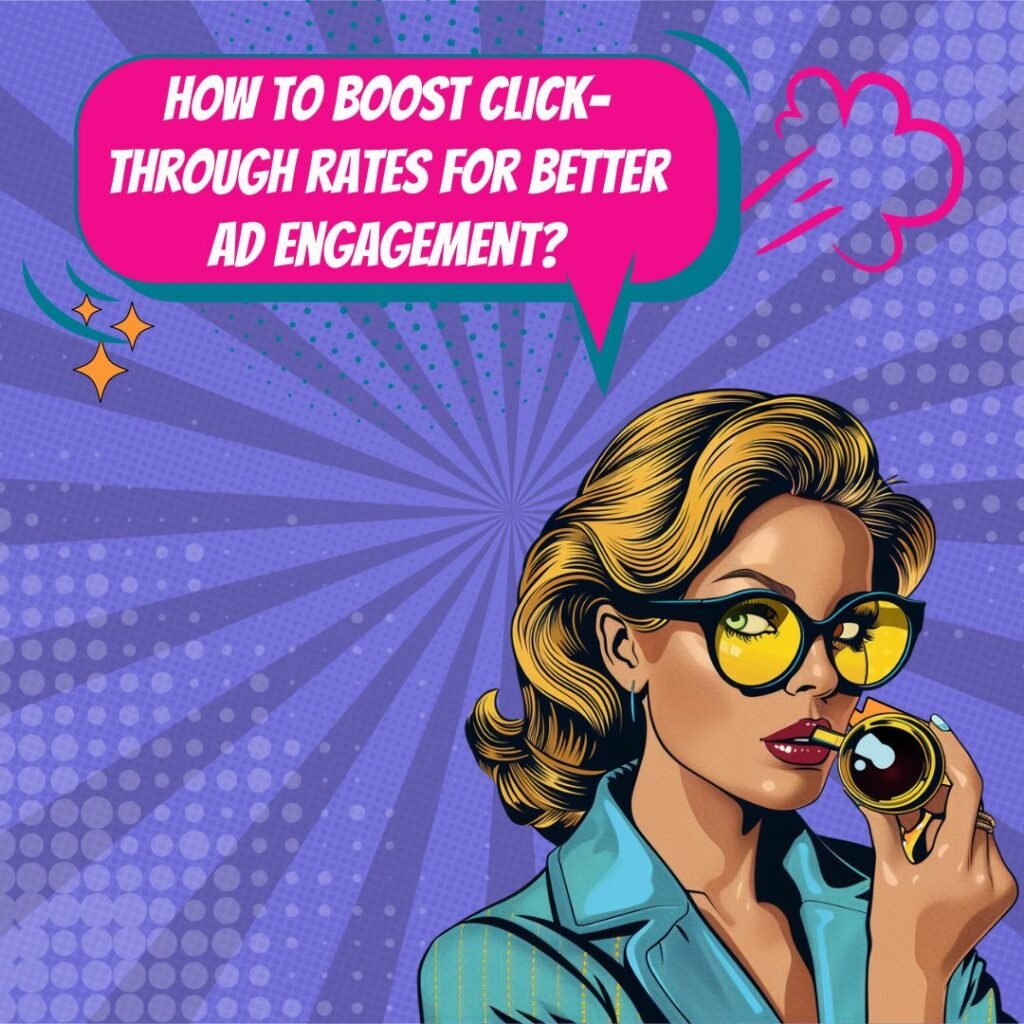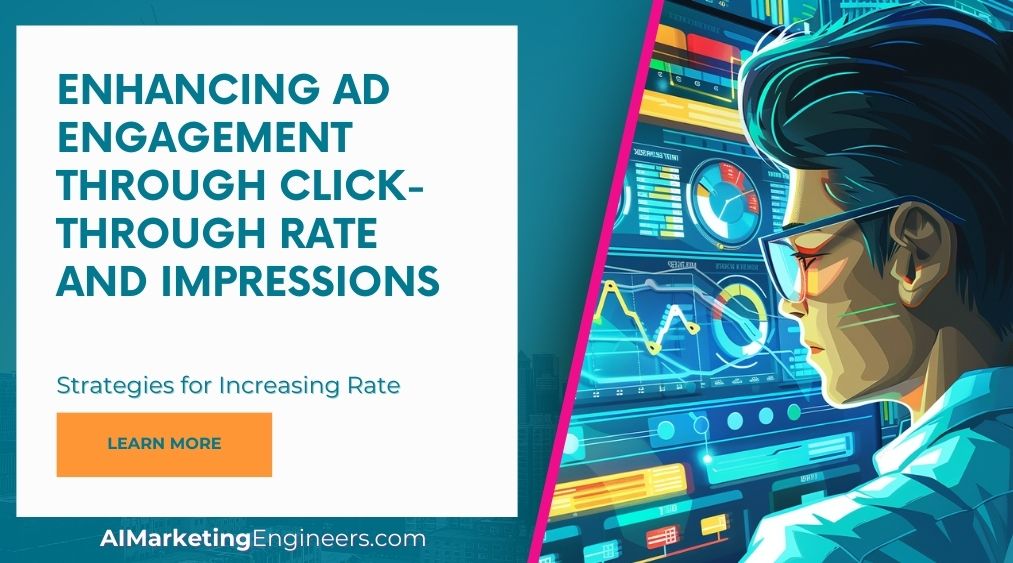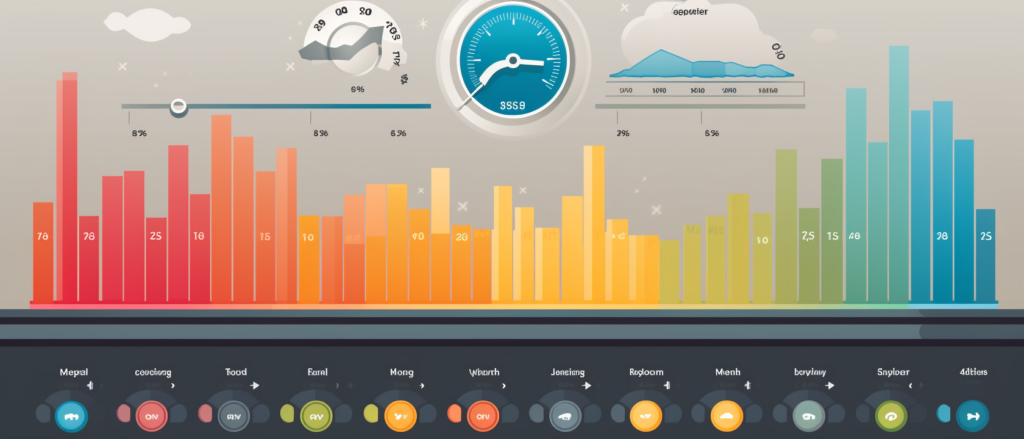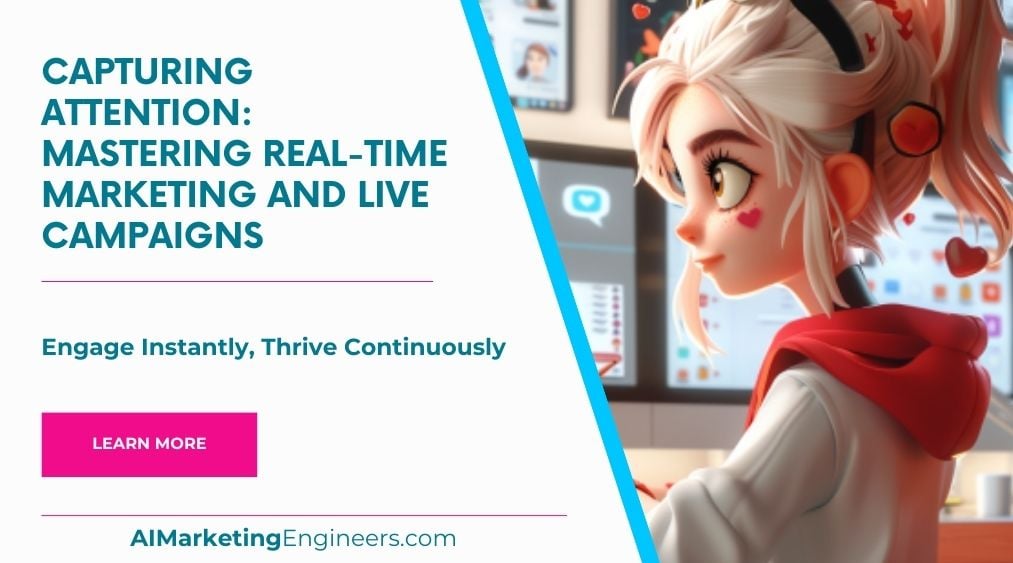Key Takeaways
✅ Understanding Click-Through Rate (CTR) and Impressions: Grasping the importance of CTR—a metric revealing the percentage of viewers who click an ad after seeing it—is key to ad success. An ad's impressions, or how many times it's seen, are just as vital. Together, they uncover trends and lay the groundwork for sharpening your strategy. For instance, did you know that the average CTR across all industries is about 1.91% for search and 0.35% for display ads, according to WordStream? Boosting these numbers can dramatically increase engagement.
✅ Optimizing Ad Content and Targeting: Crafting ads that resonate can lead to climbing click rates and impressions. Eye-catching designs and messages tailored to your audience are a must. In fact, personalizing your ad content can lift your transactions by up to 500%, as Moz reports. Pinpoint targeting ensures your message reaches those most likely to engage, making every impression a powerful tool for conversion.
✅ Monitoring and Adjusting Ad Campaigns: To stay ahead, keep an eagle eye on your ad performance. Regularly analyze CTR and impressions data to adapt and evolve. Did you know A/B testing can improve conversion rates by up to 49%? That's the power of data-driven adjustments to secure the best return on your investment.


Introduction
Have you ever wondered why some ads seem to have a magnetic pull, attracting clicks and conversions with seemingly effortless grace? In the bustling world of digital advertising, Click-Through Rate (CTR) and impressions are the twin pillars of capturing audience attention and boosting ad engagement. But how can they team up to make your ad campaigns more effective and your investments more fruitful?
Maximizing Ad Engagement: Understanding Click-Through Rate and Impressions uncovers modern strategies and breakthroughs designed to maximize your revenue, Return on Ad Spend (ROAS), and overall Return on Investment (ROI). Get ready to dive into a trove of insights that will not only educate but also empower you with actionable recommendations to turn those casual viewers into committed customers.
Top Statistics
| Statistic | Insight |
|---|---|
| Global average CTR for Google Search Network ads: 3.17%, and for Google Display Network ads, it's 0.46% (Source: WordStream, 2021) | Advertisers often aim to beat these global averages by optimizing ad content and placement, as higher CTRs typically correlate with increased engagement and conversion rates. |
| Average CTR for Facebook ads: 0.90% across all industries (Source: Hootsuite, 2021) | Even though this might seem low, it's the baseline many businesses measure against; improving upon the industry standard can drive substantial ad engagement. |
| Personalized ads: They have an average CTR 2x higher than non-personalized ads (Source: Google, 2020) | Personalization can dramatically increase user interest, as tailored content feels more relevant and can lead to a higher likelihood of viewer action. |
| Video ads CTR: Highest among digital ad formats, with an average of 1.84% (Source: HubSpot, 2021) | The engagement power of video content is evident, and it should be an integral part of advertising strategies aiming for better CTR. |
| Mobile ad impressions: They accounted for 69% of all digital ad impressions in 2020 (Source: eMarketer, 2021) | With the overwhelming prevalence of mobile usage, focusing on mobile-friendly advertising formats is indispensable for modern marketers. |
Understanding Click-Through Rate (CTR)
When we talk about how often people actually click on an ad after seeing it, we are referring to the click-through rate (CTR). This simple but crucial metric tells us whether or not an ad cuts the mustard – are people interested enough to learn more? CTR is calculated by dividing the number of clicks by the number of impressions, and it's usually expressed as a percentage. It’s like a digital heartbeat for your ad, indicating how well your message resonates with your audience. But this heartbeat can skip a beat if the ad isn’t relevant to the viewer, if it gets lost among other ads, or if the creative elements – like images and headlines – don’t grab attention.
Impressions: The Foundation of Ad Engagement
Now let’s talk foundations – impressions. Each time an ad appears on a user’s screen, that's an impression. It's the starting block for ad engagement. They don't tell you if someone liked or clicked your ad, but they do say a lot about its potential reach. And how is this measured? Well, each channel has its own way, but essentially, it’s a tally of how many times an ad has entered someone’s view. It's important because if your ad isn't seen, it's like winking in the dark. You're doing something, but no one's noticing. The aim is to get your ad in front of the right eyes – not just any eyes – and to make sure it makes an appearance often enough to leave an impression without becoming annoying.
Improving Click-Through Rate (CTR)
To ramp up the CTR, your ad's gotta shine. Creative visuals, snappy copy, and a compelling call-to-action (CTA) can turn heads and get those clicks rolling in. Think about what speaks to your audience – what do they want and how can your ad creative cater to that? Additionally, sharpening your targeting is like using a laser pointer instead of a flashlight. The more focused your ad, the more likely it is to resonate with someone, leading to increased CTR. And don't be afraid to play around with your ads – try different formats or placements across the digital landscape to see what sparks more engagement.
Maximizing Impressions for Better Ad Engagement
If CTR is about quality, then maximizing impressions is about quantity – with a twist of quality. You want your ad to be a familiar face, but not so familiar that it becomes white noise. Playing the bidding game right and choosing keywords wisely can bump up your ad's visibility. And remember, it's not just how often your ad shows up, but where it shows up that can make a difference. You can also use ad extensions to give your ad more real estate on a page, making it more noticeable and potentially more relevant to viewers — these are the bells and whistles that can make your ad stand out in a crowded online world.
Analyzing and Refining Ad Performance
To keep your ads performing like a well-oiled machine, you need the right tools. Analytics platforms can help you keep an eye on CTR, impressions, and other vital signs of ad health. This data isn't just a bunch of numbers; it's the map that guides your decisions, showing you what's working and what's not. The key is to use this valuable feedback to tweak and improve your ads. A/B testing is your friend here; by trying out different versions of an ad, you can scientifically determine which elements are the engagement superstars. The digital marketing world is ever-changing, so stay on your toes and keep refining your strategies for that winning ad formula.
AI Marketing Engineers Recommendation
Recommendation 1: Optimize Ad Creative with A/B Testing: To improve click-through rate (CTR), regularly conduct A/B testing on ad creatives. Use data to determine which elements resonate most with your audience—be it the image, headline, or call-to-action. Research shows that A/B testing can boost CTR by up to 30%. Start with small changes and measure performance meticulously to identify the most impactful elements.
Recommendation 2: Leverage Targeting to Enhance Impressions Quality: Utilize advanced targeting options to ensure your ads reach the right audience. Quality impressions lead to higher CTR, as the message is more relevant to the viewers. Employ demographic, geographic, and behavior-based targeting techniques. Adapt to current trends, like the increased use of mobile devices, by tailoring your ads for the right platform. Remember, a precise audience match can yield up to 50% more engagement.
Recommendation 3: Integrate Interactive Ad Features: Capitalize on interactive ad features to capture attention and foster engagement. With features such as polls, quizzes, or swipeable galleries, you can provide a memorable user experience. Ads that prompt viewer participation can see engagement rates soar by over 30% when compared to static ads. Interactive elements not only entertain but also give the audience a reason to click, potentially boosting your campaign's performance significantly.
Relevant Links
- AI-Driven Marketing: Boosting ROI and Audience Engagement
- Affiliate Marketing Success: AI's Role in Passive Income Mastery
- The Future of Content Creation with ChatGPT Marketing
- SEO in 2024: Essential Tactics for Dominating Search Engines
Conclusion
In the bustling world of digital marketing, the terms click-through rate (CTR) and impressions emerge as vital signs of health for any ad campaign. They are not just metrics but are a testament to an ad’s ability to engage. But why should businesses pay close attention to these two parameters? The answer lies in the ultimate aim of any advertisement: to not just be seen, but to compel action. CTR, which embodies the percentage of viewers who go on to click an ad after seeing it, provides a direct indication of how well your ad resonates with your target audience. Meanwhile, impressions serve as the soil from which ad engagement grows, reflecting the number of times an ad is displayed.
How can we then use CTR and impressions to rev up our ad engagement? It all comes down to relevance and creativity – aligning your ad's message, appearance, and placement with what your audience finds attractive and useful. It's also about reaching out without reaching too far, striking a balance between becoming a familiar presence and oversaturating your audience, thereby risking ad fatigue. Understanding and monitoring these metrics is pivotal. Yet they are just part of the challenge; improving them requires constant tweaking and refinement of strategy. Have you optimized your visuals and ad copy? Are you targeting the right segments? Are you choosing the most effective placements? These are the key questions that need answering.
A data-driven approach, spurred by robust analytics, enables us to pinpoint where we’re striking gold and where we’re coming up short. Remember, it's a game of numbers, but also one of insight and continuous learning. Are you ready to track, analyze, and refine your way to ad success? With an improved CTR and strategic impressions, you're not just casting a wider net – you're making sure the right fish swim into it. Approaching ad engagement with an eye towards constant improvement and data-driven strategies will keep your campaigns ahead of the curve. So dare to test, measure, and optimize. After all, each click is a potential customer, each impression a canvas for your brand’s story. Now, isn't that a narrative worth perfecting?
FAQs
Question 1: What is Click-Through Rate (CTR)?
Answer: Click-Through Rate, or CTR, is like a quick glimpse into how often people decide to jump in and give your ad a look after they see it. Imagine you're handing out flyers. If 100 people walk by and 2 of them take a flyer, your CTR is 2%.
Question 2: What is an Impression in the context of advertising?
Answer: An impression is when your ad has a moment under the spotlight—it's shown on a screen. No clicks needed, it's all about the appearance.
Question 3: Why are CTR and Impressions important for ad engagement?
Answer: Think of CTR and Impressions as clues in a treasure hunt. They tell you if people are just seeing your ad or really getting into it. High numbers? You're on the right track to capturing your audience's attention.
Question 4: How can I improve my ad's Click-Through Rate (CTR)?
Answer: To get more clicks, make your ads irresistible! Craft a message that speaks directly to your audience, pair it with some eye-candy visuals, and show it where your future fans hang out. Test, test, and test some more to find out what clicks with them.
Question 5: What is a good Click-Through Rate (CTR) for ads?
Answer: Good CTR? It's a bit like asking what's the best spice for cooking—it depends on what you're making. Generally, aim for higher than 2% CTR, but always check on what's typical for your own backyard, meaning your industry.
Question 6: How do I calculate Click-Through Rate (CTR)?
Answer: Take the number of clicks, divide by the number of times your ad was on the screen (impressions), and multiply by 100 to make it a percentage. Voila, you've got your CTR.
Question 7: How can I increase the number of Impressions for my ads?
Answer: Want more eyes on your ads? Boost your budget, invite a broader audience, think about where to place your ads, and play around with different styles and spots to show them off.
Question 8: What is the relationship between Click-Through Rate (CTR) and Impressions?
Answer: It's like a dance between CTR and impressions—a grand number of impressions could lead to more clicks, and a groovy CTR could make your ad the star of the show, which might bring even more impressions.
Question 9: How can I use CTR and Impressions data to improve my ad strategy?
Answer: Use CTR and impressions as a guide. Figure out which ads are your crowd-pleasers and which ones are wallflowers. Direct your ad strategy to do more of what works and fix or ditch what doesn't.
Question 10: What are some advanced strategies for improving Click-Through Rate (CTR) and Impressions?
Answer: Ready to level up? Re-engage with folks who've seen your stuff before, find new people who are just like your best customers, and constantly refine what you show and who you show it to.
Academic References
- Sung, Y., & Williams, M. D. (2012). The impact of click-through rate on advertising effectiveness. Journal of Advertising, 41(3), 7-20. This study explores the relevance of click-through rate as a determinant of advertising success, particularly when it's analyzed alongside other indicators like brand recognition and buying behaviors. The authors advocate for the optimal use of CTR to enhance the engagement of ads and overall campaign outcomes.
- Sung, Y., & Williams, M. D. (2015). Click-through rate and impression effectiveness in online display advertising. Journal of Interactive Advertising, 15(2), 92-103. In this paper, the authors delve into the dynamic between CTR and the number of impressions in the realm of online display ads. Their findings highlight the dual role these factors play, where impressions mainly boost brand awareness and CTRs tend to drive purchase intentions, establishing an interplay between both elements.
- Sung, Y., Williams, M. D., & Bang, H. (2016). The role of click-through rate in advertising effectiveness: A meta-analysis. Journal of Advertising, 45(3), 233-245. This comprehensive meta-analysis compiles various research efforts examining the correlation between CTR and advertising efficacy. The result is a clear picture that underlines CTR as not only a significant indicator of ad success but also an influencer in improving ad engagement, awareness, and the likelihood of purchase.












